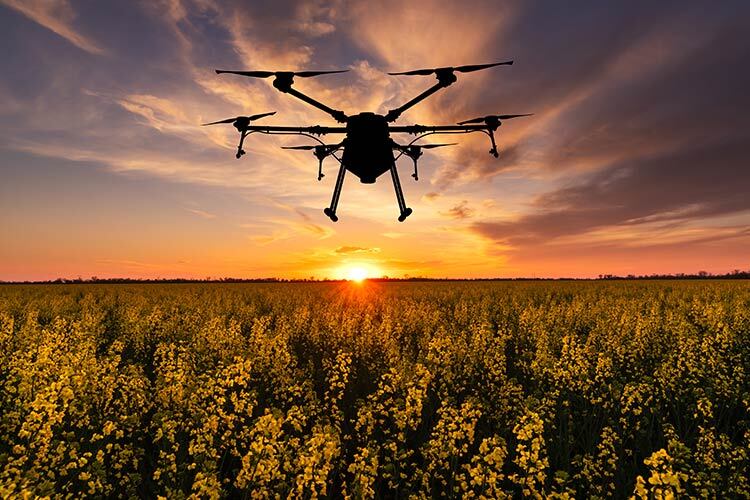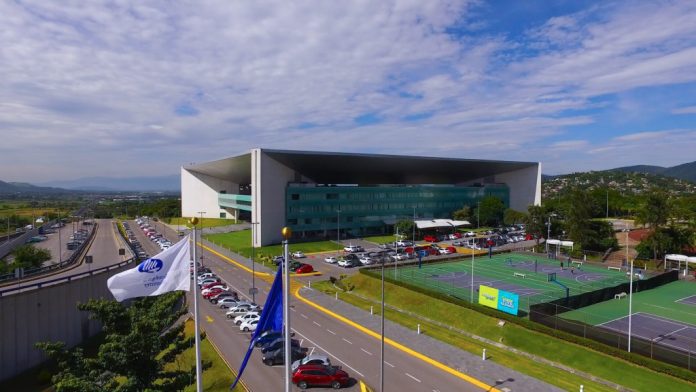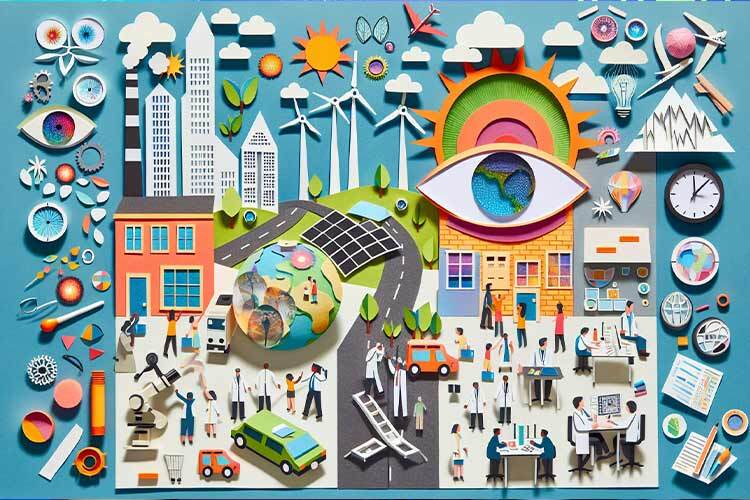In precision agriculture, new technologies like drones have replaced traditional methods, such as manual crop monitoring and blanket applications of fertilizers and pesticides. They’ve even surpassed more modern techniques like aerial photography and satellite imagery.
Today, unmanned aerial vehicles are used to assess crops and apply products in a localized and precise manner, significantly reducing the potential presence of agrochemicals in the final product.
Precision agriculture is a food production management strategy that collects, processes, and analyzes temporal, spatial, and individual data. These are combined with other information to support decision-making, taking into account field variability to improve resource efficiency, productivity, quality, profitability, and sustainability in agricultural production, as defined by the International Society of Precision Agriculture in 2019.
Drones now capture aerial images, replacing the simple task of manually scouting or exploring vast crop fields. With a diagnostic drone, a specific problem—like weeds or pests such as leaf-eating insects—can be identified over large areas. A second drone can then apply fertilizers or chemicals to target the issue in a localized manner, avoiding wasteful application across an entire crop that may not need treatment.
“The idea is to manage both temporal and spatial information to address field variability and improve resource efficiency,” says Juan Valiente, professor-researcher at Tecnológico de Monterrey’s Querétaro Campus and National Director of the Biosystems Engineering Program at the School of Engineering and Sciences. “So, if one area has a problem, the goal is to prescribe a custom solution to address that particular spot, whether it’s a pest or another issue, in a targeted way.”
Precision Agriculture for the Planet
More precise application of fertilizers or agrochemicals in smaller, targeted areas not only saves costs for farmers but also benefits soil health, consumers, and the environment.
“These new technologies can boost yields by enabling more informed decision-making through the collection of specific data. There’s also greater control thanks to continuous monitoring, and it reduces physical effort,” Valiente tells TecScience in an interview.
For instance, a yield monitor calculates productivity across a crop over time and space, based on GPS location data, which is then displayed on a map. The same device can estimate the amount of grain being harvested and its moisture level at each site.
Another key challenge that precision agriculture addresses is water efficiency. According to Mexico’s 2022 Agricultural Census by INEGI, the more technology is integrated into irrigation systems, the better water is utilized for food production.
Countries Like Mexico Reap the Benefits
The integration of this “collection of technologies,” as Valiente succinctly describes precision agriculture, has been steadily increasing. In 2016 alone, devices based on satellite navigation systems saw adoption rates between 60% and 80% in some countries.
However, the application of different technological methods depends on two factors, according to a 2021 study: if the devices are “built-in knowledge“—meaning they don’t require extra skills to operate, such as guidance systems, automatic section control, and yield monitors—they are more likely to be embraced by farmers. But if the technologies require knowledge investment, such as software programs for data analysis, soil mapping, and variable-rate fertilization and planting, their adoption may be slower.
In Mexico, where 32.1 million hectares are dedicated to agriculture, new technologies have primarily focused on localized applications of fertilizers and pesticides and sustainable water use, notes Valiente. The main challenges faced by Mexican farmers have been the high cost of inputs and services, followed by climate factors, low sales, and soil fertility loss, according to INEGI.
“Mexico has low water-use efficiency. This is particularly critical in a country where water is scarce, and the largest share is used for agriculture. Add to that climate change scenarios, where rising temperatures and decreasing rainfall are expected to increase demand for water. Any technology that improves water use efficiency would have a significant impact,” explains Valiente.
In 2020, agriculture accounted for 67.5% of total water consumption, according to the National Water Commission (Conagua).
Among the challenges Valiente identifies in the advancement of precision agriculture in Mexico is the opportunity to specialize in the use of real-time weather and crop data for managing technologies that improve agri-food production efficiency.
At Tecnológico de Monterrey’s AGRO Experimental Field (CAETEC) in Querétaro, precision technologies like soil sensors, drones, satellites, and software are used to monitor various crops, including grains, forage, vines, and vegetables.
The Future of Agriculture is Regenerative
As for the future of agriculture and related technologies, Valiente is optimistic. He speaks about his encounters with regenerative agriculture and the impressive machinery he’s seen at conventions, comparing them to spaceships, like something out of Star Wars.
Regenerative agriculture refers to holistic farming systems that, among other benefits, aim to conserve and regenerate arable soil while improving water and air quality, increasing biodiversity in ecosystems, producing nutrient-rich foods, and sequestering carbon to help mitigate climate change, as defined by the United Nations Food and Agriculture Organization (FAO).
“We used to think the soil was there for us to use and abuse as we wished, but new trends seek to reduce that environmental impact. While we’re still in the early stages, more and more young people are adopting this mindset,” says Valiente.
For this academic, the future of agriculture is clear: it must tackle the challenges of feeding an increasingly demanding global population, address climate change, become more resource-efficient, leverage new technologies like Artificial Intelligence, produce innovative foods such as alternative protein sources, complement agri-biotechnology to withstand droughts or high temperatures, and even act as a mechanism for carbon capture.
Did you find this story interesting? Would you like to publish it? Contact our content editor to learn more at marianaleonm@tec.mx
















